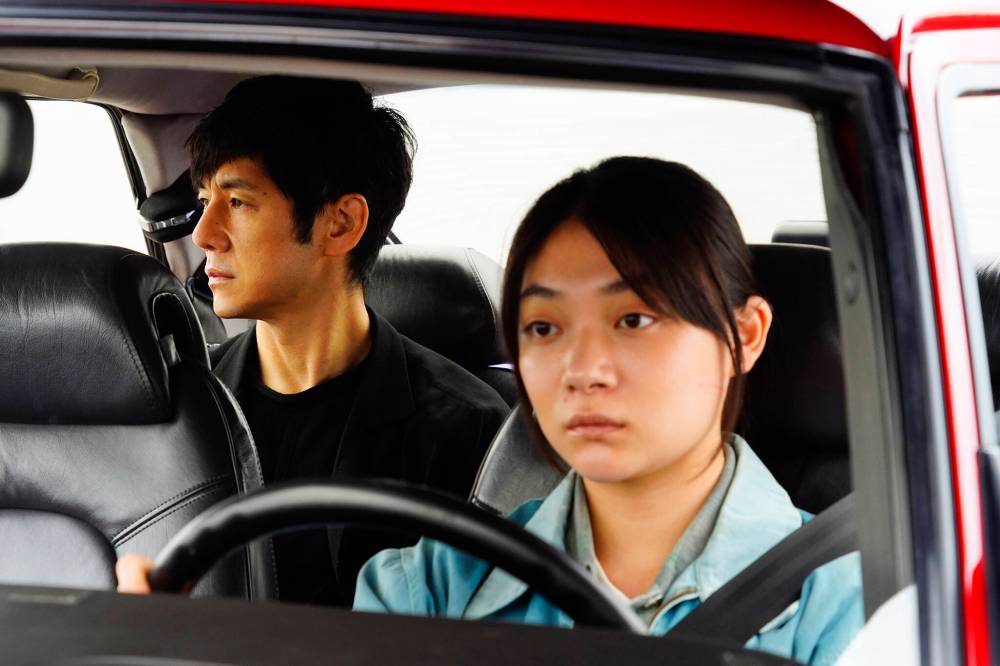The journey is the destination in movie’s long, slow drive
Advertisement
Read this article for free:
or
Already have an account? Log in here »
To continue reading, please subscribe:
Monthly Digital Subscription
$0 for the first 4 weeks*
- Enjoy unlimited reading on winnipegfreepress.com
- Read the E-Edition, our digital replica newspaper
- Access News Break, our award-winning app
- Play interactive puzzles
*No charge for 4 weeks then price increases to the regular rate of $19.95 plus GST every four weeks. Offer available to new and qualified returning subscribers only. Cancel any time.
Monthly Digital Subscription
$4.99/week*
- Enjoy unlimited reading on winnipegfreepress.com
- Read the E-Edition, our digital replica newspaper
- Access News Break, our award-winning app
- Play interactive puzzles
*Billed as $19.95 plus GST every four weeks. Cancel any time.
To continue reading, please subscribe:
Add Free Press access to your Brandon Sun subscription for only an additional
$1 for the first 4 weeks*
*Your next subscription payment will increase by $1.00 and you will be charged $16.99 plus GST for four weeks. After four weeks, your payment will increase to $23.99 plus GST every four weeks.
Read unlimited articles for free today:
or
Already have an account? Log in here »
Hey there, time traveller!
This article was published 10/02/2022 (1427 days ago), so information in it may no longer be current.
Moving, melancholy, mysterious, this Japanese art-house film has been quietly building momentum on the festival circuit and just this week became an Oscar front-runner, with nominations for Best Picture, Best Director, Best Adapted Screenplay and Best International Feature.
That makes for perfect timing for Drive My Car to open on the big screen at Cinematheque.
Director Ryusuke Hamaguchi (Happy Hour) and co-writer Takamasa Oe offer an expanded adaptation of a 30-page story in Haruki Murakami’s 2014 collection Men Without Women, with the film channelling many of the internationally bestselling writer’s recurring themes — love, loss, loneliness, really great stereo systems.
Yusuke (Hidetoshi Nishijima of Tokyo Rendezvous) and Oto (Reika Kirishima of Norwegian Wood) live in a Tokyo high-rise. He’s an actor and theatre director who specializes in multilingual productions. (Drive My Car is in Japanese, English, Korean Sign Language, Mandarin, Tagalog, Korean and Indonesian, with subtitles.) She’s a TV screenwriter.
Yusuke knows that Oto is perpetually unfaithful but chooses not to confront her, afraid of upsetting the delicate equilibrium of their relationship, with its complex mixture of long history, sexual passion, creative collaboration and shared sorrow.
Then Oto dies and takes her secrets with her.
Two years later, and Yusuke is a familiar Murakami protagonist, middle-aged, solitary, slightly bewildered. Unable to move past his wife’s death, he throws himself into work, travelling to Hiroshima to put on a production of Chekhov’s Uncle Vanya. Rehearsals are complicated by the fact Yusuke has deliberately chosen his wife’s final lover, Koji (Masaki Okada), a beautiful, hotheaded young movie star recently undone by a scandal, to play Vanya.
Yusuke is also frustrated to learn that because of the theatre company’s insurance regulations, his adored tomato-red Saab will be driven by a professional. His assigned driver is the 23-year-old Misaki (Toko Miura), a quiet, competent young woman holding buried pain of her own.
The film examines how art and life react against each other. Yusuke, so silent and self-contained in his real-life relationships, looks to his work to confront his feelings, from internalizing the “I can’t go on/I’ll go on” vibe of Waiting for Godot to obsessing over Uncle Vanya, that famous Russian compendium of regret. Listening over and over to a cassette tape of the play’s dialogue, which Oto had made so he could run his lines in the car, Yusuke uses Vanya’s words about disappointment, recrimination and betrayal to respond to Oto’s disembodied voice. “Chekhov is terrifying,” he tells another character. “When you say his lines, he drags out the real you.”
The other liberating force in the film is driving, though not in the usual all-American, open-road sense. Hamaguchi is more interested in the odd intimacy of conversations in a car, when people sit side-by-side or front and behind, with one person’s eyes necessarily on the road, and how this sometimes frees people up to share things they seem unable to talk about across a table.

Hamaguchi shoots lengthy scenes inside the car, while also employing extraordinary aerial tracking shots to place it in a much larger landscape. He also uses Yusuke and Misaki’s smooth accelerating and curving and merging to suggest the strange eroticism of driving.
A long movie, with much of its runtime confined to a car interior, might not sound compelling, but the script is both direct and subtle, the look is lucid but layered, and the performances underplayed but powerful.
Drive My Car might even help to restore attention spans. (I know mine has been severely dinted during the pandemic.) This is a slow, patient, quiet three-hour (!) film in which not much happens, but every word, every small gesture, every silence is enthralling. And all those moments incrementally surge into a profound and affecting finish, in which Yusuke finally comes to a quintessential Murakami conclusion: “We can’t know another’s heart, so we must study our own.”
alison.gillmor@freepress.mb.ca

Studying at the University of Winnipeg and later Toronto’s York University, Alison Gillmor planned to become an art historian. She ended up catching the journalism bug when she started as visual arts reviewer at the Winnipeg Free Press in 1992.
Our newsroom depends on a growing audience of readers to power our journalism. If you are not a paid reader, please consider becoming a subscriber.
Our newsroom depends on its audience of readers to power our journalism. Thank you for your support.

